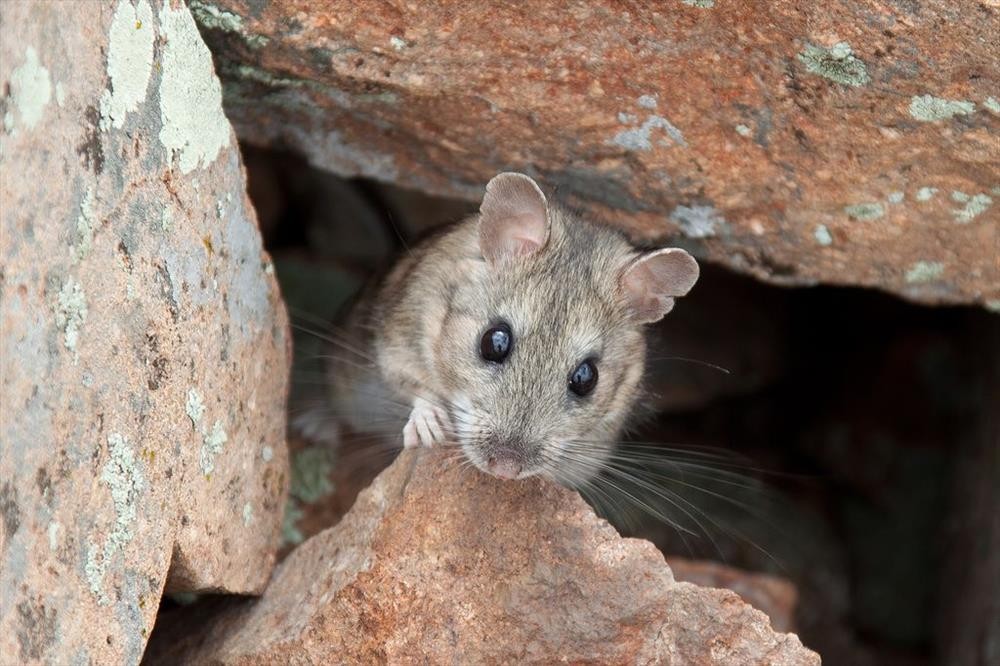Bushy-tailed woodrat
(Neotoma cinerea)

Description
The bushy-tailed woodrat, or packrat (Neotoma cinerea) is a species of rodent in the family Cricetidae found in Canada and the United States. Its natural habitats are boreal forests, temperate forests, dry savanna, temperate shrubland, and temperate grassland. The bushy-tailed woodrat is the original "pack rat", the species in which the trading habit is most pronounced. It has a strong preference for shiny objects and will drop whatever it may be carrying in favor of a coin or a spoon. Bushy-tailed woodrats can be identified by their large, rounded ears, and their long, bushy tails. They are usually brown, peppered with black hairs above with white undersides and feet. The top coloration may vary from buff to almost black. The tail is squirrel-like - bushy, and flattened from base to tip. These woodrats are good climbers and have sharp claws. They use their long tails for balance while climbing and jumping, and for added warmth. These rodents are sexually dimorphic, with the average male about 50% larger than the average female. Adult length: 11 to 18 in (28 to 46 cm), half of which is tail. Weight: Up to 1.3 lb (590 g). The bushy-tailed woodrat is the largest and most cold-tolerant species of woodrat. Bushy-tailed woodrats occupy a wide range of habitats, from boreal forests to deserts. Their preferred habitat is in and around rocky places, so they are often found along cliffs, canyons, talus slopes, and open rocky fields. They readily adapt to abandoned buildings and mines. They can be found from sea level up to 14,000 feet (4,300 m), but they become increasingly restricted to higher elevations toward the southern end of their range. These woodrats do not do as well in old-growth forests. They are found with greater frequency and in higher densities in more open habitats. The bushy-tailed woodrat prefers green vegetation (leaves, needles, shoots), but it will also consume twigs, fruits, nuts, seeds, mushrooms, and some animal matter. One study in southeastern Idaho found grasses, cactus, vetch, sagebrush, and mustard plants in their diets, as well as a few arthropods. In drier habitats, they will concentrate on succulent plants. These rodents get most of their water from the plants that they eat.
Taxonomic tree:







